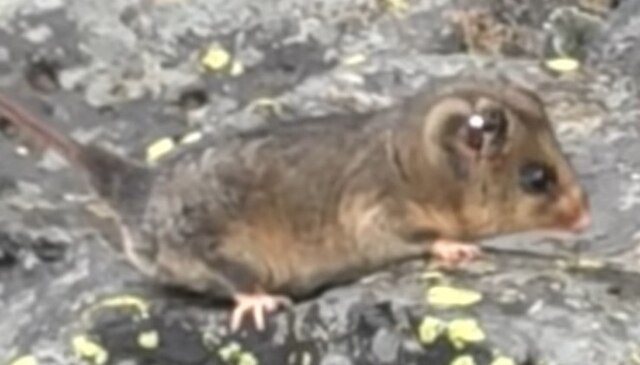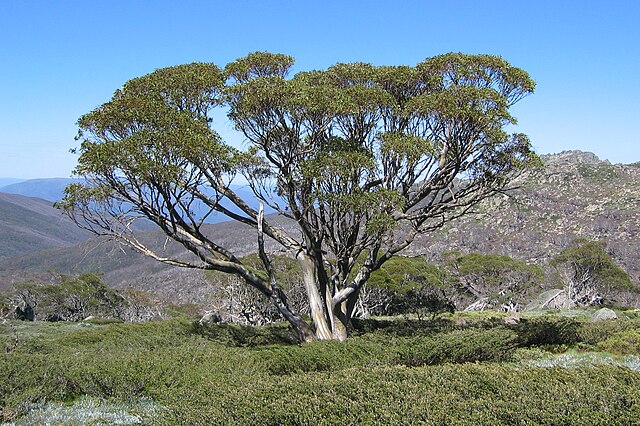The mountain pygmy possum ; also simply known as the burramys, is a small, mouse-sized nocturnal marsupial of Australia found in dense alpine rock screes and boulder fields, mainly southern Victoria and around Mount Kosciuszko in Kosciuszko National Park in New South Wales at elevations from 1,300 to 2,230 metres. At almost 14 cm (5.5 in), its prehensile tail is longer than its 11 cm (4.3 in) combined head and body length. Its diet consists of insects, fleshy fruits, nuts, nectar and seeds. Its body is covered in a thick coat of fine grey fur except for its stomach, which is cream coloured; its tail is hairless. On the underside of the female's body is a pouch containing four teats. This possum is the only extant species in the genus Burramys. It is also the only Australian mammal restricted to alpine habitat.
Mountain pygmy possum
Plate from the 1896 description
Mountain pygmy possum at Reptile Park, Gosford
The Kosciuszko National Park is a 6,900-square-kilometre (2,700 sq mi) national park and contains mainland Australia's highest peak, Mount Kosciuszko, for which it is named, and Cabramurra, the highest town in Australia. Its borders contain a mix of rugged mountains and wilderness, characterised by an alpine climate, which makes it popular with recreational skiers and bushwalkers.
Kiandra Snow Shoe Carnival 1900
Cabramurra, Australia's highest town, was built during construction of the Snowy Mountains Scheme.
Blue Lake in the characteristically U-shaped glacial valley, Kosciuszko National Park.
Snow Gum at tree line along Dead Horse Gap Walk, Kosciuszko National Park.







